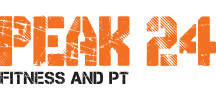How fit are you, really? There is no one universal way of measuring someone’s fitness level. Nonetheless, many of us are interested to know how fit we are, or how much we are benefiting from our workouts. It’s not an easy question to answer because the term fitness is actually a very broad term.
There are 4 popular ways to categorize fitness. In this article we will discuss cardiovascular fitness. Your cardiovascular fitness involves how much endurance you have when doing cardio activities. The second measure is body weight which includes tests such as the ‘waist to hip ratio’ or ‘body fat caliper testing.’ These tests provide feedback to encourage you to stay within a healthy body weight range and so, are invaluable when designing a nutrition and exercise program. The last two aspects of fitness are strength and flexibility which can be tested using the ‘push up test’ and ‘the sit and reach test’ respectively.
Cardiovascular fitness testing
Your local GP can perform a sub-maximal exercise stress test, which evaluates how your heart copes with extra demand during exercise. This can be done on a treadmill or stationery bike, which gradually increases in speed and gradient measuring the performance and capacity of the heart, lungs and blood vessels during exercise. Doctors monitor your blood pressure and heart rate rhythm in a controlled environment.

For elite athletes, the Astrand-Rhyming Cycle Ergometer Test can be done to measure your VO2 maximum (maximum oxygen consumption). Athletes pedal on a cycle ergometer at a constant workload for 7 minutes. The heart rate is measured every minute, and the steady state heart rate is determined. Put very simply, the lower you heart rate during each stage, the better your fitness level.

The 3-Minute Step Test is popular because it can be performed at home or at the gym and measures your aerobic (cardiovascular) fitness level based on how quickly your heart rate returns to normal after exercise. Step on and off a 30cm box for 3 minutes straight while keeping a consistent pace. At 3 minutes, stop and measure your heart rate for 1 full minute, you are seeing how long it takes for your active heart rate to return to resting heart rate. There is a chart for men and women as well as age to see where you rate from excellent through to very poor.

The Shuttle Run Test or ‘beep test’ is designed to measure the maximum endurance of an individual and popular among sporting teams because it allows a large number of people to complete it at once. It involves running continuously between two points 20 meters apart keeping in time with a synchronised pre-recorded CD which plays beeps at set intervals. As the test proceeds, the intervals become shorter forcing the athletes to increase speed until the point they can no longer continue and are they are allocated a score.

